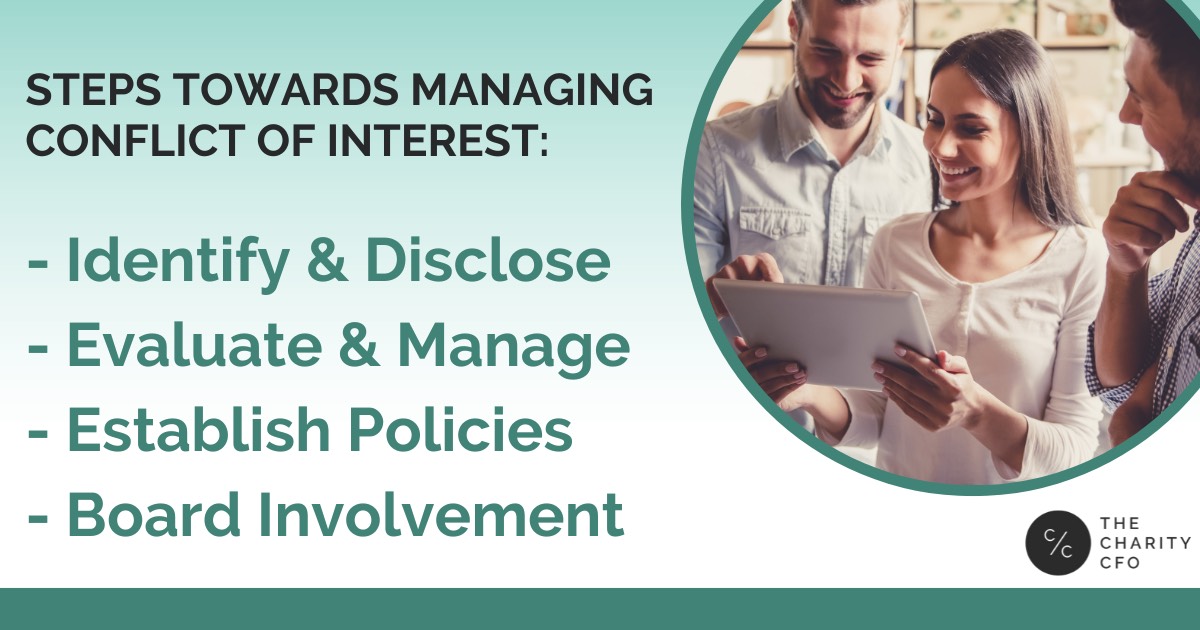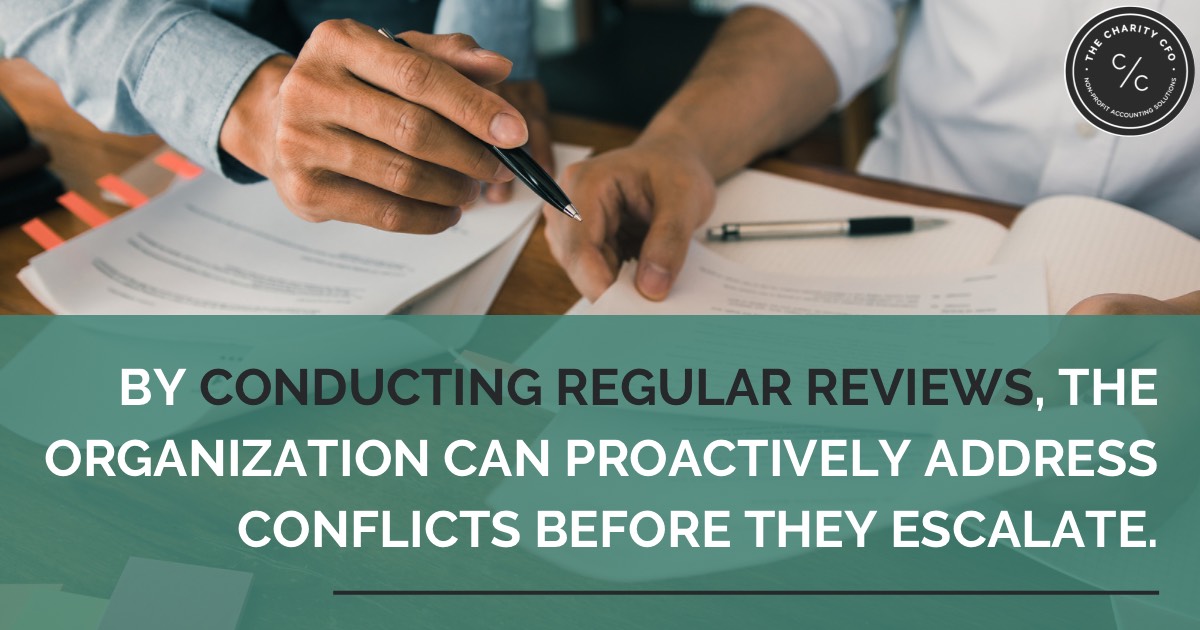Addressing conflicts of interest in a nonprofit is essential for success. It directly impacts the credibility, public trust, and overall effectiveness of the nonprofit in achieving its mission. By actively identifying and managing conflicts of interest, these organizations can protect their credibility, maintain donor confidence, and ensure that their resources are utilized solely for the benefit of their intended recipients.
This article emphasizes the importance of addressing conflicts of interest in nonprofit organizations and how often it should be done.
What are Conflicts of Interest?
A conflict of interest in a nonprofit organization occurs when an individual’s personal interests or loyalties interfere (or potentially interfere) with their objective decision-making in their capacity as a representative or member of the organization. This conflict may arise when a person’s financial, familial, or personal relationships create a competing interest that could compromise their ability to act in the best interest of the nonprofit and its beneficiaries.
An example of a potential conflict of interest in a nonprofit is when a church accepts pass-through gifts. Although they may be well-intended to help a member of the congregation, churches often have little control over the funds and how they are used. These gifts or funds can be misused or lead to other ethical issues if not handled correctly.
Failure to address conflicts of interest can result in internal and external dysfunction within the nonprofit organization, potentially causing disruptions in its operations and relationships with stakeholders. Not to mention the integrity is compromised, leading to a bad reputation and loss of public trust. Moreover, in some cases, unmanaged conflicts of interest may lead to legal complications, subjecting the nonprofit to potential legal issues and regulatory investigations.
Understanding Legal and Ethical Obligations
Nonprofits must be well-versed in the specific legal requirements and regulations governing conflicts of interest to avoid potential legal pitfalls. Additionally, nonprofit directors have three primary fiduciary responsibilities: duty of care, duty of loyalty, and duty of impartiality- to act in the best interest of the organization. Beyond legal obligations, ethical considerations play a central role in ensuring fair and unbiased decision-making and fostering an environment of trust and accountability.
Identifying and Disclosing Conflicts of Interest
Encouraging proactive identification of potential conflicts of interest empowers stakeholders to address issues early on, minimizing the risk of undue influence on decision-making. Establishing clear policies and procedures for disclosing conflicts of interest provides a structured framework for individuals to come forward with relevant information, ensuring transparency and accountability. Open communication within the organization guarantees that conflicts are managed appropriately, helping to uphold the nonprofit’s mission and maintain the confidence of donors, beneficiaries, and the public.
Evaluating and Managing Conflicts of Interest
Evaluating and managing conflicts of interest requires conducting thorough and impartial evaluations to understand the extent of the conflicts. It is essential to assess their potential impact on decision-making processes and the overall integrity of the organization. Once conflicts are identified, implement appropriate measures to manage and mitigate them effectively. If necessary, decisive action should be taken promptly and impartially to address any conflicts that arise, ensuring the organization’s continued adherence to ethical standards and its mission-driven objectives.
Establish Strong Conflict of Interest Policies
Implementing defined conflict of interest policies helps ensure the decision-making process remains unbiased and aligned with the nonprofit’s mission. Promoting transparency and monitoring potential conflicts builds trust among stakeholders, demonstrating the organization’s commitment to ethical conduct and responsible stewardship of resources.
A comprehensive approach should define conflicts of interest, provide specific examples, and detail procedures for disclosing and managing potential conflicts. It is essential to ensure that all directors and stakeholders thoroughly understand the policy’s provisions, their responsibilities, and the possible consequences of non-compliance. Regular reviews and frequent check-ins enable the board to adapt to evolving circumstances and reinforce a culture of accountability and adherence to the guidelines.
How Does the Board Come into Play?
The board of directors plays a crucial role in managing conflicts of interest within a nonprofit organization. They are responsible for understanding and upholding the policies, ensuring compliance among all stakeholders, and making decisions that prioritize the organization’s best interests. The board exercises oversight by regularly reviewing and updating conflict of interest policies and disclosures, as well as conducting periodic self-assessments to evaluate their performance in handling conflicts and identifying areas for improvement. By actively fulfilling these responsibilities, the board reinforces the organization’s commitment to transparency, accountability, and ethical conduct.
Annually Review Conflicts of Interest
By conducting regular reviews, the organization can assess its policies and procedures, identify any potential gaps or emerging issues, and proactively address conflicts before they escalate. This practice emphasizes prioritizing the organization’s mission over individual interests and fosters a culture of accountability and trust among stakeholders. Through transparent and ethical decision-making, nonprofits can strengthen public confidence, attract donors, and ensure they remain true to their charitable objectives, making the annual review an indispensable process in the governance of nonprofit organizations.

Do You Struggle to Make Sense of Your Financial Statements?
Get our FREE GUIDE to nonprofit financial reports, featuring illustrations, annotations, and insights to help you better understand your organization's finances.
Get the free guide!



0 Comments